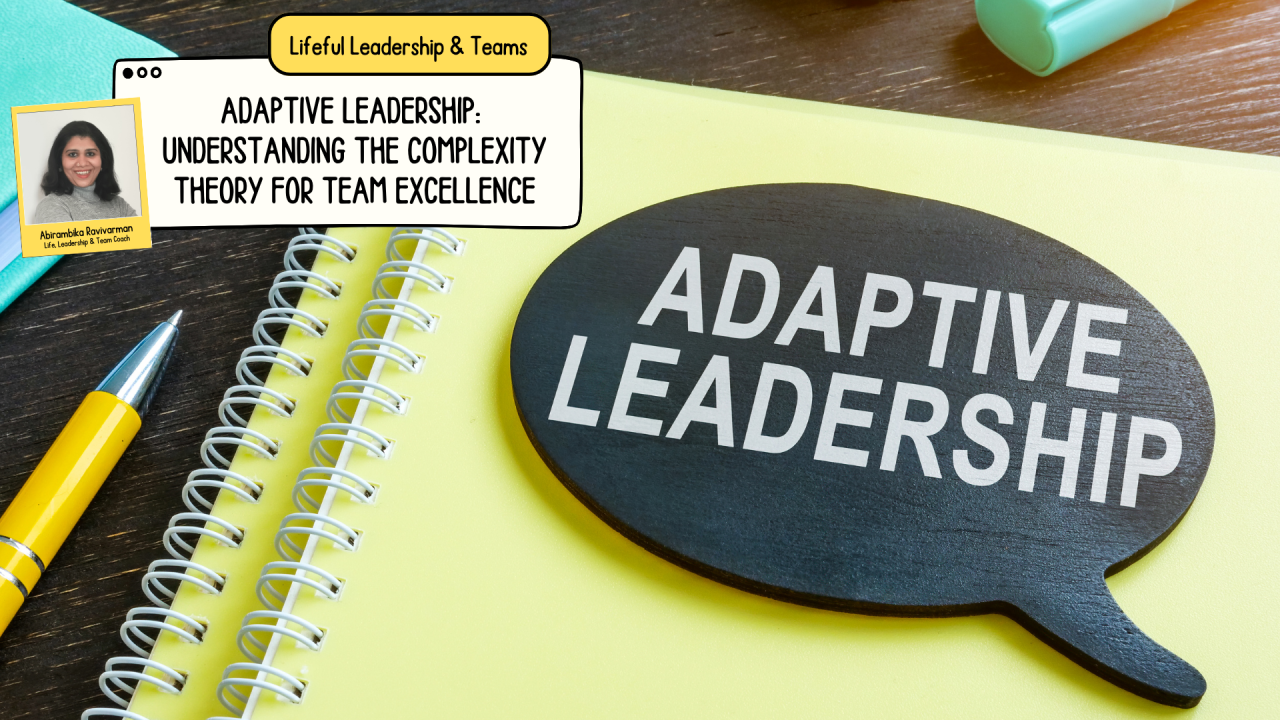
Adaptive Leadership: Understanding the Complexity Theory for Team Excellence
In the heart of uncertainty and rapid change, the art of Adaptive Leadership takes center stage. Just picture this: Your organization is on the cusp of a significant industry shift. The ground beneath you is shifting, and the horizon is obscured by the fog of unpredictability. This is the moment when leadership transcends the conventional and steps into the realm of the adaptive.
I was reading about complexity theory and it has some powerful learnings to understand teams and systems. In this article I am hoping to bring in some of my learnings about complexity theory and how it connects to adaptive leadership.
Understanding Complexity Theory:
This principle asserts that organizations and their environments are intricate systems with numerous interconnected parts. This involves recognizing patterns, anticipating changes, and fostering an environment where the team can respond effectively to emerging challenges.
Complexity theory is like wearing special glasses to see the hidden order in seemingly chaotic systems. Imagine looking at a messy room and realizing that beneath the disorder, there's a natural order waiting to be discovered. This applies to everything, economy, organization and then the teams at work. Complexity theory suggests that even if each person is doing their own thing, there's a hidden order to how the team works together. It's a bit like how different instruments in a band create a unified melody.
I have heard many leaders say "everything should run like a well oiled machine". I think complexity theory helps us see teams and organizations more like a living thing, adapting and evolving.
The reason why I wanted to write about this came from a current team coaching engagement where there seemed to be chaos with different points, needs from every team member but as we progressed into the sessions we are able to see patterns of clarity and common needs.

Here are some reflective questions to think about based on the image here and comment with your thoughts
What patterns are you seeing in the image above?
Do you see chaos or the underlying structure?
If this image told a story, what might that story be?
How Does Adaptive Leadership work along with Complexity Theory:
If we think of adaptive leader as the guide who wears those special glasses of complexity theory then they understand that beneath the surface of everyday challenges and changes, there's a hidden order waiting to be discovered.
Embracing Chaos: This leader stands unfazed in the face of chaos, understanding that within it lies a concealed, natural order.
Cultivating Self-Organization: Recognizing the principle that systems can self-organize with a grasp of their rules, this leader empowers their team and adapt to what works best.
Embracing Interdependence & interconnectedness: Complexity theory highlights the interconnectedness of elements in a system. Adaptive leaders recognize the interconnected nature of team dynamics, fostering collaboration and communication among team members.
Facilitating Pattern Recognition: Help teams recognize and understand the patterns that emerge within complex systems. This enables proactive responses to shifts in the environment.
In essence, adaptive leadership and complexity theory work hand in hand. Adaptive leaders can use the principles of complexity theory to guide their teams through change, recognizing the hidden order within the apparent chaos and leveraging it for organizational growth and success.
Connect with Me:
If you're guiding or leading a team through a period of transition or growth and would like to explore how a team coach can add significant value, schedule a call with me [here]. Let's delve into strategies to enhance your team's dynamics and achieve collective success.
Great read and thank you for sharing.
Senior Managing Director
3moAbirambika Ravivarman - Leadership n Team Coach, PCC, ACTC Very informative. Thanks for sharing.